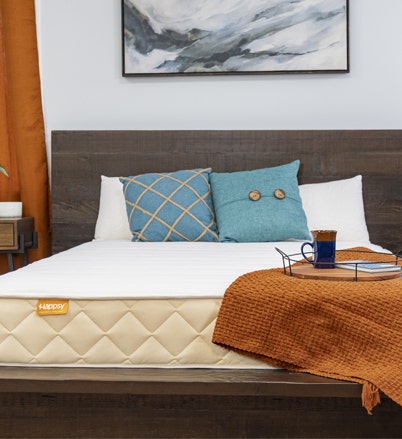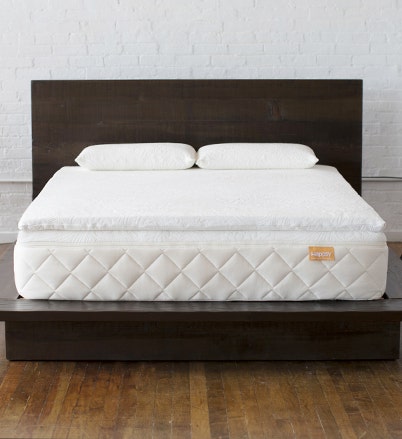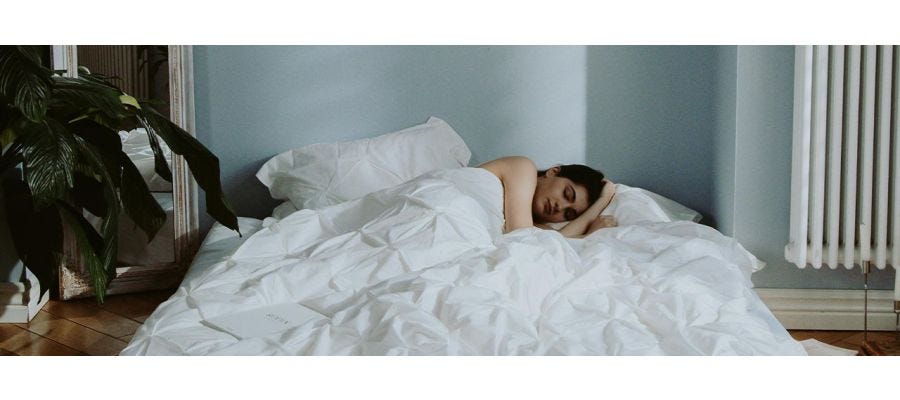
These days we track our sleep with apps and wearable devices while drifting off tucked under weighted blankets and listening to soundscapes, all with the goal of optimizing our sleep. But long before we had these modern perks, people were just out here … sleeping however they could on whatever they had.
Turns out, the story of sleep isn’t something you’d fall asleep to – it’s actually pretty interesting. Let’s rewind the clock and take a look at how humans have historically caught their Zzz over the years.
Sleep in the prehistoric era
We’re starting off as far back as we can go – to before written history. Early humans didn’t have the luxury of deep, uninterrupted sleep because they had to stay alert for predators. Experts think our ancestors slept in short bursts in groups instead of long stretches alone to prioritize safety. And there definitely weren’t plush, organic pillows or supportive organic mattresses. It was more like dirt and leaves – a slightly different kind of “organic.” (Still better than toxic chemicals!)
The sleep of ancient civilizations
Once humans got past the pesky problem of predators trying to eat them while they slept, sleep started to get a little more structured. Each ancient civilization had their own rituals, beliefs and setups surrounding sleep.


Ancient Egyptions & sleep
Ancient Egyptians took their sleep seriously – and spiritually. Sleep was linked with death and held in high importance, especially dreams. This meant all of their dreams were viewed as messages, and we have Egyptians to thank for history’s first dream interpretation manual. Sleep temples, or dream temples, were available as a kind of hospital focused on sleep where patients would be placed in a trance-like state and have their dreams analyzed to determine treatment.
Egyptians are credited as being the first civilization to use a biphasic sleep pattern where they would sleep for four to six hours at night, wake up for leisure activities and then return to sleep for another four to six hours. Instead of pillows, they used carved headrests often featuring inscribed prayers of protection. (What do you think – ready to replace your pillow? No? To each their own!)
The sleep of ancient Greeks
Early Greeks were all about philosophizing, and sleep was not immune to their pondering. An early Greek medical writer and philosopher, Alcmaeon of Croton, believed sleep was a period of unconsciousness that happened when blood withdraws from the surface of the body and a person wakes up when it returns. The ancient physician Hippocrates named sleep as one of the six requirements to maintain health – pretty accurate!
As for their sleeping habits, Ancient Greeks would go to bed after their evening meal called “symposium.” True to their love of learning and talking, this meal was focused on discussing everyday topics while eating and drinking. After a night of sleep, they would wake up early and go to the local parliament to start their day.
Sleep in ancient Rome
Similar to Ancient Greeks, Ancient Romans had plenty of their own thoughts on sleep. They believed dreams had divine origins and were a way for their gods to communicate with mortals. This meant dreams (and therefore sleeping, too!) had a high importance, so people could go to dream-oracles where they were put to sleep in the hopes of receiving a prophetic dream.
The Romans gave us roads, aqueducts and … naps? Wealthy Romans had designated bedrooms with actual beds and cushions, while many practiced midday rest – a.k.a. the original power nap. Similar to our modern mattress, Romans slept on a culcita which was essentially a cloth sack filled with feathers, wool or hay depending on the social class. Hey, at least it’s organic, right?
Medieval bedtimes
Sleep looked a little different in medieval Europe – and by different we mean crowded. Families and even travelers shared beds out of necessity to stay warm and because of limited space. Again, people in this era didn’t always sleep in one long stretch.
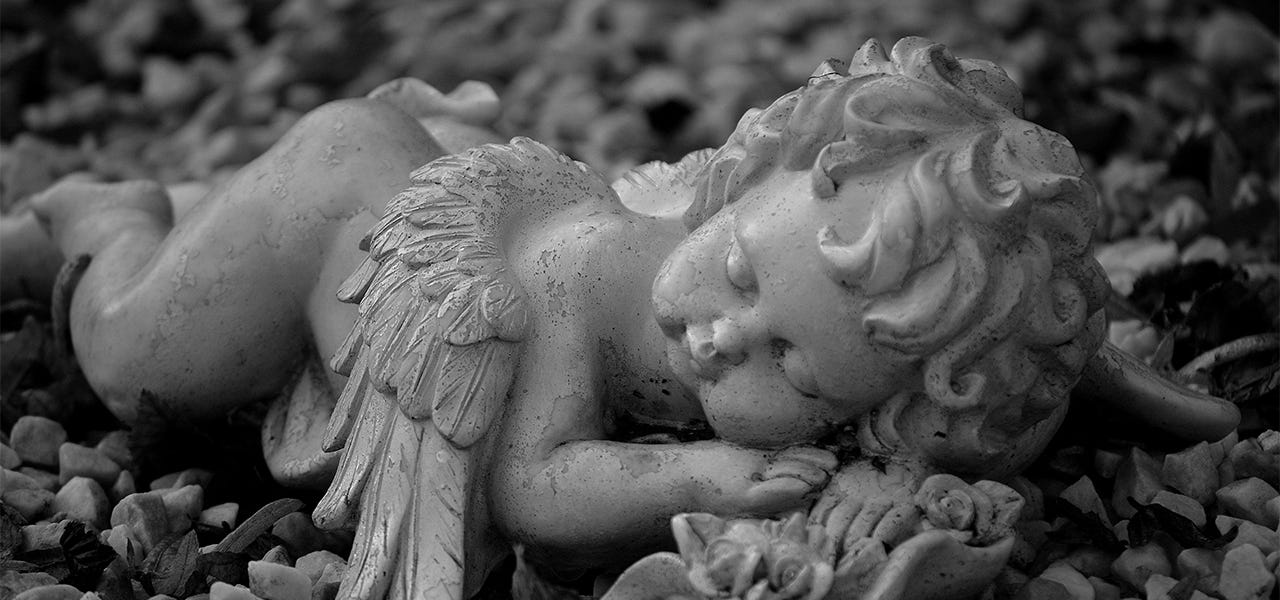

Segmented sleep was common where folks would snooze for a few hours (known as “first sleep"), wake up around midnight for various activities, like praying and eating, then get back to bed (“second sleep”). Sounds kinda nice and productive, right?
The Industrial Revolution
The Industrial Revolution really shook things up for humans in every aspect of their lives – how they lived, worked and even how they slept. Thanks to machines, factories and artificial light, people started syncing their sleep to clocks instead of their natural rhythms. Living in a loud, bright, bustling city and working long shifts doesn’t really line up with the natural circadian rhythm. This is where our eight hours of uninterrupted sleep schedule starts.
Sleep in the modern era
Here we are today, where sleep is a little … complicated. Being surrounded by screens, working across time zones and doomscrolling has led to “biohacking” our way to better sleep. There are sleep podcasts, smart mattresses, blackout curtains, sunrise alarm clocks and so many more products and methods designed to help us sleep better than ever before. It’s kind of awesome, but it also creates a pressure to sleep perfectly, which can actually make it harder to sleep.
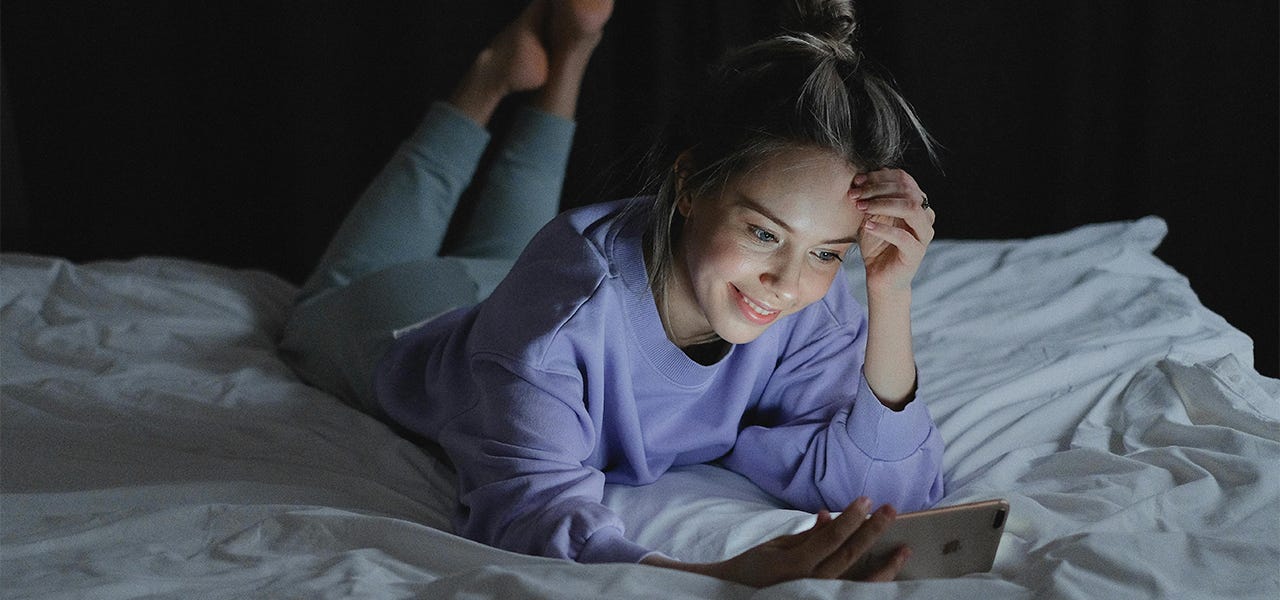

No matter the era of humanity, we have always needed sleep. The specifics have changed a lot throughout time, and will probably continue to change. We’ve gone from sharing beds to going solo and taking midday naps to powering through the eight-hour workday. From ancient times to the modern day, we have always adapted our sleep to the world around us. That means there is no perfect formula – just what works for you (and what doesn’t).
How does your sleep setup compare?
We might not have to sleep on straw or stone anymore, but there’s still some questionable materials in what we sleep on (looking at you, chemical flame retardants). At Happsy, we believe your mattress shouldn’t mess with your health or the planet’s health. That’s why ours are certified organic and made without the questionable stuff – so you can rest easy knowing what’s under you is actually supporting your well-being and not hindering it.
Modern comfort. Natural materials. A happier night’s sleep. Now that’s an evolution.
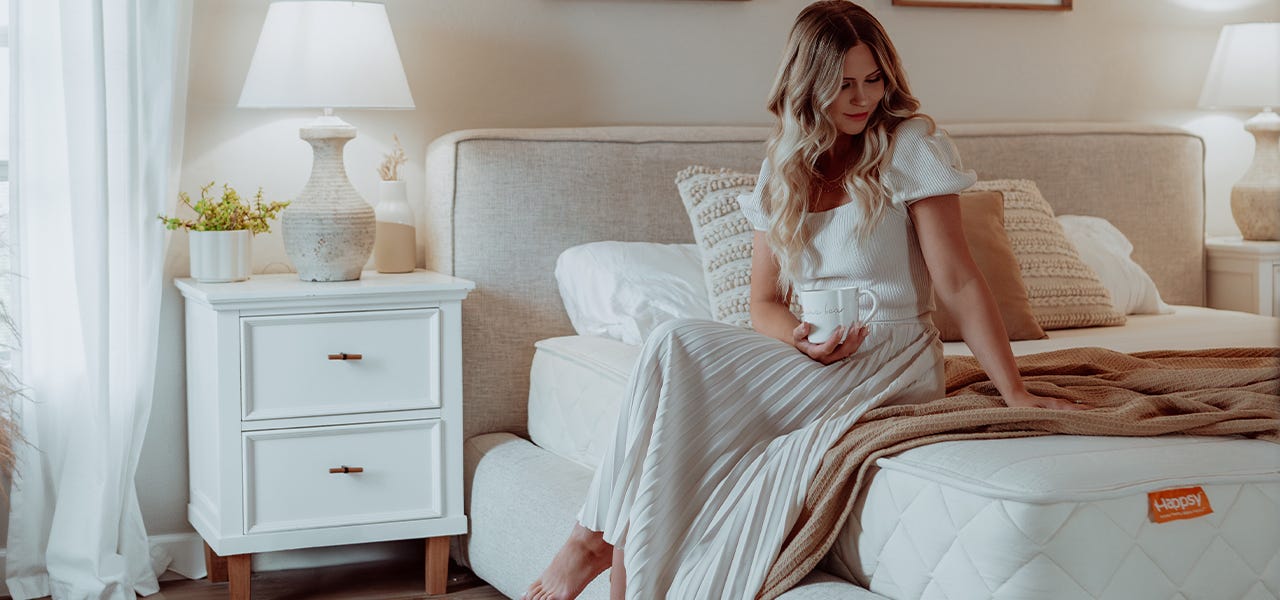

The future of sleep: it’s up to us
We’ve come a long way! And while we can’t predict where sleep trends will go next (maybe robot lullabies?), we do know sleep is personal, powerful and worth protecting.

